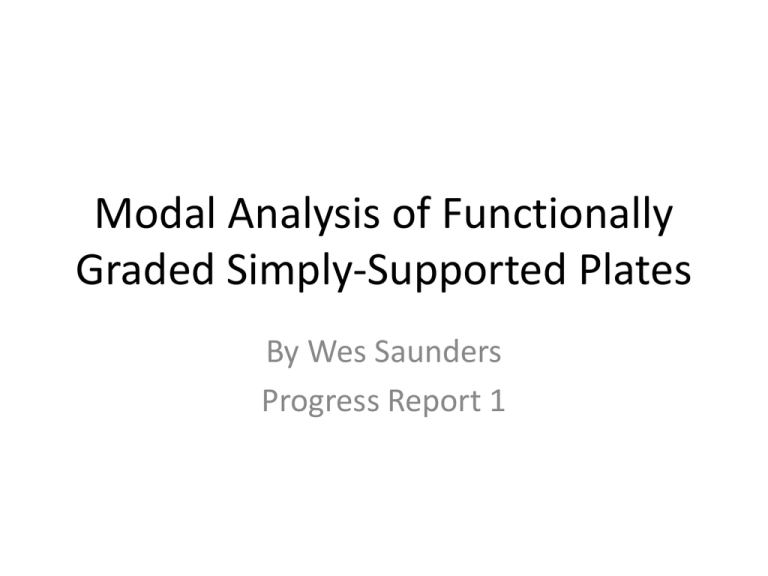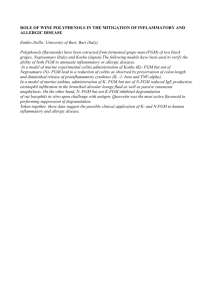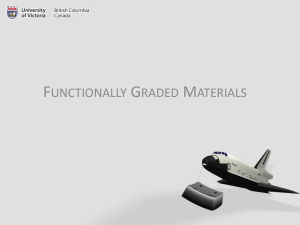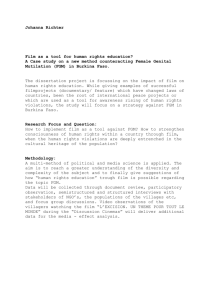Modal Analysis of Functionally Graded Simply-Supported Plates By Wes Saunders Progress Report 1
advertisement

Modal Analysis of Functionally Graded Simply-Supported Plates By Wes Saunders Progress Report 1 Purpose • To use Finite Element Analysis (FEA) to perform a modal analysis on functionally graded materials (FGM) to determine modes and mode shapes. Background • FGMs – FGMs are defined as an anisotropic material whose physical properties vary throughout the volume, either randomly or strategically, to achieve desired characteristics or functionality – FGMs differ from traditional composites in that their material properties vary continuously, where the composite changes at each laminate interface. – FGMs accomplish this by gradually changing the volume fraction of the materials which make up the FGM. • Modal Analysis – Modal analysis involves imposing an excitation into the structure and finding when the structure resonates, and returns multiple frequencies, each with an accompanying displacement field. Problem Description • Cases – (A) Isotropic steel plate – (B) A linear FGM consisting of steel and aluminum – (C) A power law (n=2) FGM of steel and aluminum – (D) A power law (n=3) FGM of steel and aluminum – (E) A power law (n=3) FGM of steel and alumina – (F) A power law FGM of aluminum and zirconium, relation given by the Vel 2004 paper Methodology • FEA • Modal analysis performed by COMSOL eigenfrequency platform. Methodology (cont.) • Mori-Tanaka estimation of material properties for FGMs – Gives accurate depiction of material properties at certain point in the thickness, dependent on volume fractions and material properties of the constituent materials – Get density (ρ), shear (K) and bulk (μ) moduli – Use elasticity to get expressions for E and ν Results • Cases A compared against plate theory • Cases B-E checked by convergence to Case A • Case F is compared to results in Vel 2004 paper.




